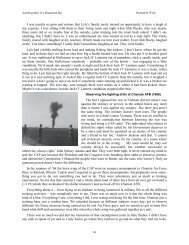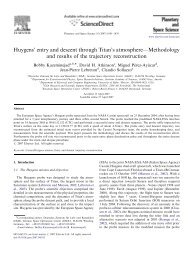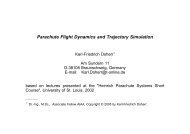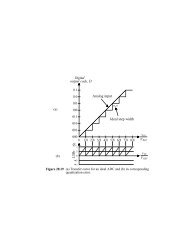THERMAL DESIGN AND PERFORMANCE OF PROBES IN THICK ...
THERMAL DESIGN AND PERFORMANCE OF PROBES IN THICK ...
THERMAL DESIGN AND PERFORMANCE OF PROBES IN THICK ...
You also want an ePaper? Increase the reach of your titles
YUMPU automatically turns print PDFs into web optimized ePapers that Google loves.
Scaling of pressure forces suggests this approach<br />
has some design merit – smaller boxes of a given<br />
wall thickness can withstand higher pressures. It<br />
also conveniently transfers the problem of<br />
sampling aperture and window design (a major<br />
challenge in Pioneer Venus, which needed sapphire<br />
and diamond windows) from the probe contractor<br />
to the individual experimenters. Note also that the<br />
Galileo probe did not have to endure pressures<br />
nearly as high as Pioneer Venus.<br />
Some of the thermal testing associated with<br />
Galileo, as well as a somewhat obscure heating<br />
effect (namely heating by adiabatic compression,<br />
as air progressively leaks into the probe volume<br />
and raises its pressure) are described in [6].<br />
Additional discussion of testing and flight<br />
performance is presented in [7].<br />
Some Galileo Probe housekeeping temperatures are<br />
available on the Planetary Data System (PDS) via<br />
the Atmospheric Structure Instrument [8,9]. The<br />
relevant data product is ASI.PDS.F.HK.02 and are<br />
plotted in figure 6 at the end of this paper.<br />
The temperature labelled ‘Taero’ is from a<br />
temperature sensor mounted on the inside of the<br />
Descent Module outer skin. This was to provide<br />
some sort of back-up to the ASI atmospheric<br />
temperature sensors : it followed the ASI sensors<br />
with a lag of ~ 1minute or









